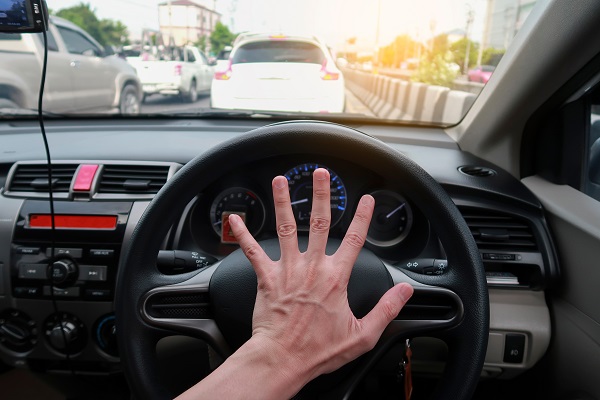An orbital fracture, or a broken bone in the eye-socket, is a common type of traumatic facial injury. The eye socket, or the orbit, surrounds the eye and protects it from external forces. The floor and nasal sides of the eye socket are paper-thin, making fractures occur frequently in any kind of impact that involves the head or face. The rim of the eye socket is a thicker bone, but it can still sustain a fracture in a high-impact collision or serious injury. Orbital fractures occur in about 10-25% of all facial fracture cases.
Orbital Rim Fractures
Orbital fractures may involve the rim of the eye socket, its floor, or both areas of the socket. An orbital rim fracture typically occurs with extensive injury or when an object directly impacts the face. Rim fractures only transpire after a large amount of force, such as the face’s collision with a car’s dashboard in an accident. Orbital rim fractures typically come in conjunction with other facial fractures and sometimes brain injuries.
Damage may affect the eye area or extend throughout the body, depending on the accident. Such damage may also result in injuries to the eye muscle, the optic nerve, the nerves in the forehead and cheeks, the tear duct, and the sinuses, in addition to orbital rim fractures. Doctors categorize orbital rim fractures into two types: zygomatic and frontal. Zygomatic fractures affect the lower edge of the rim or part of the cheekbone. Frontal bone fractures involve the upper part of the forehead.
Indirect and Direct Orbital Floor Fracture
An indirect orbital floor fracture is one that affects the thin floor of the eye socket without impacting the rim. The floor may suffer a crack or rupture completely. Indirect floor fractures can cause small holes that may trap parts of the eye muscle, inhibiting movement in the socket.
This can lead to double or blurred vision. These fractures usually happen when something larger than the eye opening strikes the eye, such as someone’s fist or a baseball. When the eye socket’s rim and floor sustain fractures in an impact, it’s called a direct orbital floor fracture.
Causes and Effects of Orbital Fractures
Around 85% of traumatic eye injuries result from accidents, and the other 15% stem from violent assaults. Common causes of orbital fractures include car accidents, sports-related injuries, trips and falls, and violence. The number of orbital fractures from car accidents has decreased significantly with the advent of seatbelts and airbags. Home repair projects and accidents involving tools can result in orbital fractures, as can pieces of debris such as chunks of lumber or rocks flying into the face.
Orbital fractures often result in swelling, bruising, black eyes, and possible areas of bleeding on the whites of the eyes. They can cause blurred vision, trouble looking around, the eye bulging from the socket or appearing sunken, numbness surrounding the injury, swelling, and cheek or forehead deformity.
Treatment and Prognosis
Treatment of an orbital fracture depends on its type and severity. Doctors typically prescribe ice packs, antibiotics, and decongestants for small fractures that do not affect eye movement, as they will heal on their own. More severe fractures may need plastic or reconstructive surgery and help from an ophthalmologist to remedy double vision. You may need surgery if the fracture results in bone fragments, trapped eye muscles, or injuries that affect appearance.
The prognosis for most orbital fractures is good. Even orbital fractures that require surgery have a high success rate and a low risk of complications or adverse side effects. Doctors will likely tell you to rest the eye and refrain from blowing your nose as the fracture heals. With the proper treatment, an orbital fracture does not result in long-term or permanent damage.
Sources:
https://www.health.harvard.edu/diseases-and- conditions/eye-socket- fracture-fracture- of-the- orbit
https://www.ncbi.nlm.nih.gov/pmc/articles/PMC3324224/
https://www.hopkinsmedicine.org/healthlibrary/conditions/adult/orthopaedic_disorders/fractures_
85,P00915/







